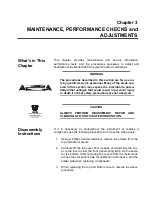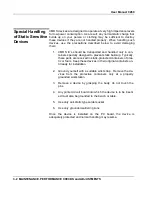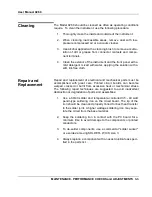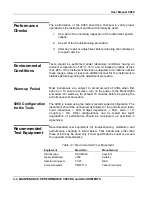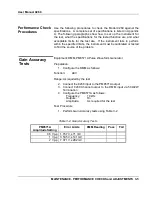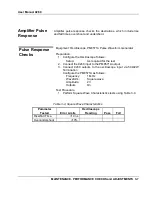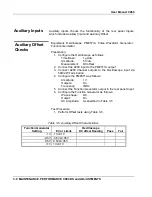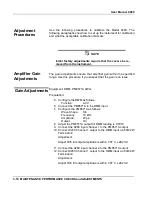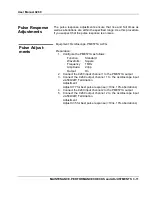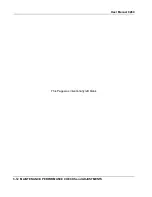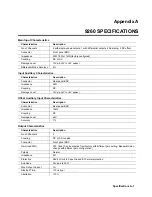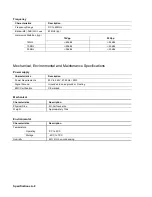
User Manual 9260
MAINTENANCE, PERFORMANCE CHECKS and ADJUSTMENTS 3-3
Cleaning
The Model 9260 should be cleaned as often as operating conditions
require. To clean the instrument, use the following procedure:
1.
Thoroughly clean the inside and outside of the instrument.
2.
When cleaning inaccessible areas, remove dust with low-
pressure compressed air or a vacuum cleaner.
3.
Use alcohol applied with a cleaning brush to remove accumu-
lation of dirt or grease from connector contacts and compo-
nent terminals.
4.
Clean the exterior of the instrument and the front panel with a
mild detergent mixed with water, applying the solution with a
soft, lint-free cloth.
Repair and
Replacement
Repair and replacement of electrical and mechanical parts must be
accomplished with great care. Printed circuit boards can become
warped, cracked or burnt from excessive heat or mechanical stress.
The following repair techniques are suggested to avoid inadvertent
destruction or degradation of parts and assemblies:
1.
Use a 60/40 solder and temperature-controlled 35 - 40 watt
pencil-type soldering iron on the circuit board. The tip of the
iron should be clean and properly tinned for best heat transfer
to the solder joint. A higher wattage soldering iron may sepa-
rate the circuit from the base material.
2.
Keep the soldering iron in contact with the PC board for a
minimum time to avoid damage to the components or printed
conductors.
3.
To de-solder components, use a commercial "solder sucker"
or a solder-removing SOLDER - WICK, size 3.
4.
Always replace a component with an exact duplicate as speci-
fied in the parts list.













